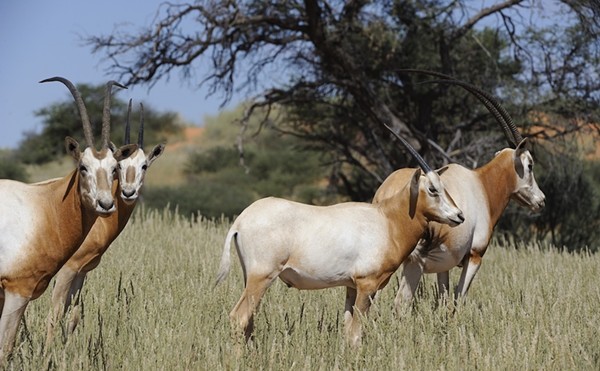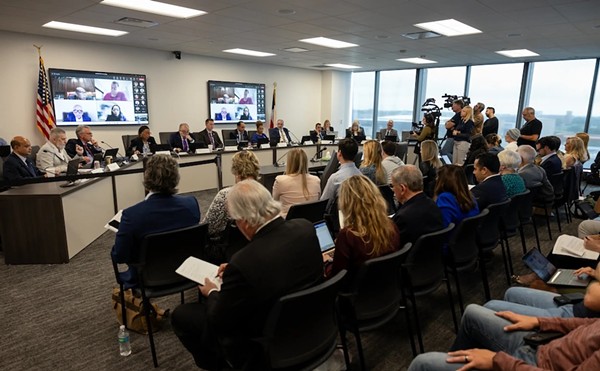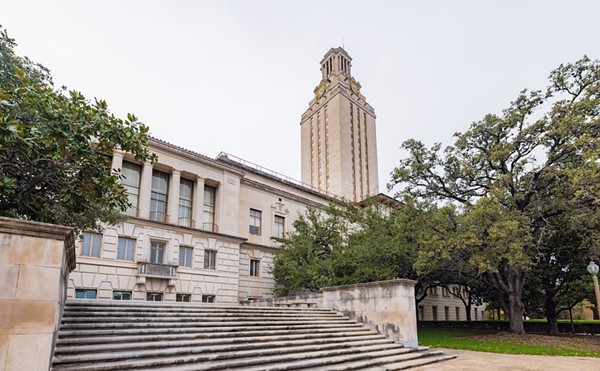The towering wind turbines covering the mesas outside McCamey have been turning for more than a decade. Those who veer from Interstate 10 and shut their engines off can hear them cutting the air, creating up to 75 megawatts of pollution-free power. Despite generous tax-abatement deals provided by the community since being declared “Wind Energy Capital of Texas” by the Texas Legislature, the development brought some tax revenue, irregular construction work, and 40 permanent jobs. The turbines provide occasional entertainment, too. Describing the experience of watching one turbine kick on, startling a vulture, McCamey Mayor Sherry Phillips laughed, “I never knew a vulture could fly backwards.”
Despite complaints from some environmentalists, Phillips says the West Texas turbines do little damage to birds and aren’t located in the path of a major migratory route. Of course, the towers have also been designed in a way that makes it impossible for birds to nest on them as eagles did on earlier towers with predictable results, now well chronicled, off the coast of California. But locals do have one complaint: the transmission lines that take the electricity generated here into the state’s electric grid have been maxed out for years. “We’re stymied until we can get our product to market,” Mayor Phillips said. “And, you know, you can just push it so far.”
Though the state was studying the anticipated bottleneck before Florida Power & Light’s turbines went up in 1999, it took until 2005 for the Texas Legislature to launch an aggressive effort to help wind energy expand in the state, setting a goal of 6,000 megawatts by 2015. So-called Competitive Renewable Energy Zones were created across West Texas and the Panhandle to spur that development, and the Lower Colorado River Authority was tapped with surveying where the transmission-lines should go. While West Texans are willing sellers of such renewable energy and urbanites to the east willing buyers of “green” power, Hill Country residents in the middle haven’t warmed to the idea so quickly.
Last year, the Texas Public Utility Commission approved spending $5 billion for major new power lines to connect the urban core of Texas to the distant wind farms of West Texas and the Panhandle — touching off more than a few contentious hearings in which the Hill Country’s “quality of life” was repeatedly referenced.
David Power, deputy director of the advocacy group Public Citizen’s Texas office, sees the conflict this way: “There are a lot of influential wealthy people who live in the Hill Country. There are several former utility executives who live in the Hill Country. So they’re very familiar with the whole transmission-line procedure and know how to make it painful for utilities.”
One proposed “priority” line that was to have run from Fredericksburg to Lampasas, the Gillespie-Newton line, was defeated when regulators agreed to perform a patch-up job instead and upgrade existing lines. PUC spokesperson Terry Hadley told the Current that originally proposed new lines might not be needed for 15 or 30 years. A second priority transmission line reaching from Kendall County to the McCamey wind fields, the McCamey D line, was taken up briefly by the PUC Commissioners last week. Had PUC Chairman Barry Smitherman not just requested some last-minute second-guessing from the state’s Electric Reliability Council, the trio would have embraced it on the spot.
As it stands now, residents of Kendall and Gillespie Counties have another week before the deal is done. ERCOT’s report to the PUC is due by the end of the week; the PUC will revisit the McCamey D vote on September 29.
Both State Rep Doug Miller, R-New Braunfels, and state Senator Troy Fraser, R-Horseshoe Bay, have urged PUC Chairman Barry Smitherman to consider buying out the Florida Power & Light’s McCamey transmission line instead of embarking on major new construction projects — a move that Texans for Public Justice, a non-partisan, Austin-based think tank, estimates will only delay the costly new line by three to five years. Senator Fraser received $11,000 from FPL in one day in 2008 and another $10,500 on January 10, 2010, according to TPJ.
Smitherman answered the legislators’ request by asking ERCOT to reexamine the “continued need” for the McCamey line expansion. It was a point that earned him a barb or two from fellow Commissioner Donna Nelson, who said she would “prefer” her fellow commissioners not try to reevalute power plans in the future “on a segment-by-segment basis.”
However, at their September 15 meeting, all three commissioners expressed their support for the McCamey D line. “It is specially designed to alleviate what is already severe congestion,” said Smitherman. “The importance of this line is such that … I just do not believe we have a strong basis for delaying this.”
While Power questioned the legality of buying a transmission line from a private utility, he also suggested practical problems with buying up the line FPL installed to bring the state’s first wind farm to market. “The easements are not nearly wide enough, so they would have to renegotiate the width of easements. The towers are the wrong size for the voltage they’re running; they’re not tall enough. What you would be doing is having a pre-set of negotiated agreements that you would have to renegotiate,” Power said. “And you would significantly enrich the stockholders of FPL at the cost of the ratepayers of Texas.”
All the double-guessing taking place about a proper route pleased the state Sierra Club. That group’s Conservation Director, Cyrus Reed, wrote Smitherman last week to suggest it is “only logical” the lines hug as often as possible to Interstate 10, something for the LCRA may take into account as it works to come up with a route less contentious than previous offerings — one of which even spanned Texas’ prized Palo Duro Canyon, Power said.
As an economic force, wind is nothing to sneeze at.
Travis Brown at the Texas Department of Rural Affairs said although the state has yet to investigate the full economic impact of wind power, the turbines saved Nolan County, where it now represents 20 percent of the local workforce and has surpassed McCamey as the true wind capital, boasting around 3,000 megawatts capacity. As turbines first started to dot the West Texas landscapes, landowners were offered contracts for $3,000 per year per turbine. That figure has grown to as high as $10,000 per turbine today, Brown said.
And yet wind is not the end of the line for rural economies on the other side of the picturesque Hill County divide. Solar power has been waiting for incentives on par with wind for years. PUC Commissioner Kenneth Anderson is working on a rollout of a statewide standard for non-wind renewables requested by the Lege last year, sure to kick off a rush that will put solar on the map for Texas, too — if it can get to the I-35 market.
If the state can’t expand its wind holdings, coal, natural gas, and nuclear plants will be all the more likely. “If Texas is going to take advantage of its tremendous wind capacity, they’re going to have to get those lines built,” Brown said. “Nobody wants them in their backyard, but they do have to go somewhere.”
“We’re an energy-based community,” said Mayor Phillips. “We’ve been an oil community for many, many, many years. We’d welcome solar, but solar uses the same transmission as wind. So we’re stymied there.” Yet despite the Hill Country resistance, fueled by some plain dumb planning on LCRA’s part, that McCamey line appears to be finally linking up.
“It will never replace oil and gas,” Phillips said of wind power, “but it’s going to stretch our use of oil and gas.” Then she added a message to the solar companies out there: “This is where nobody’s going to complain. It may not be the best place for `solar` … but that’s worth something.”
McCamey, in other words, is open for business. Almost. •


















